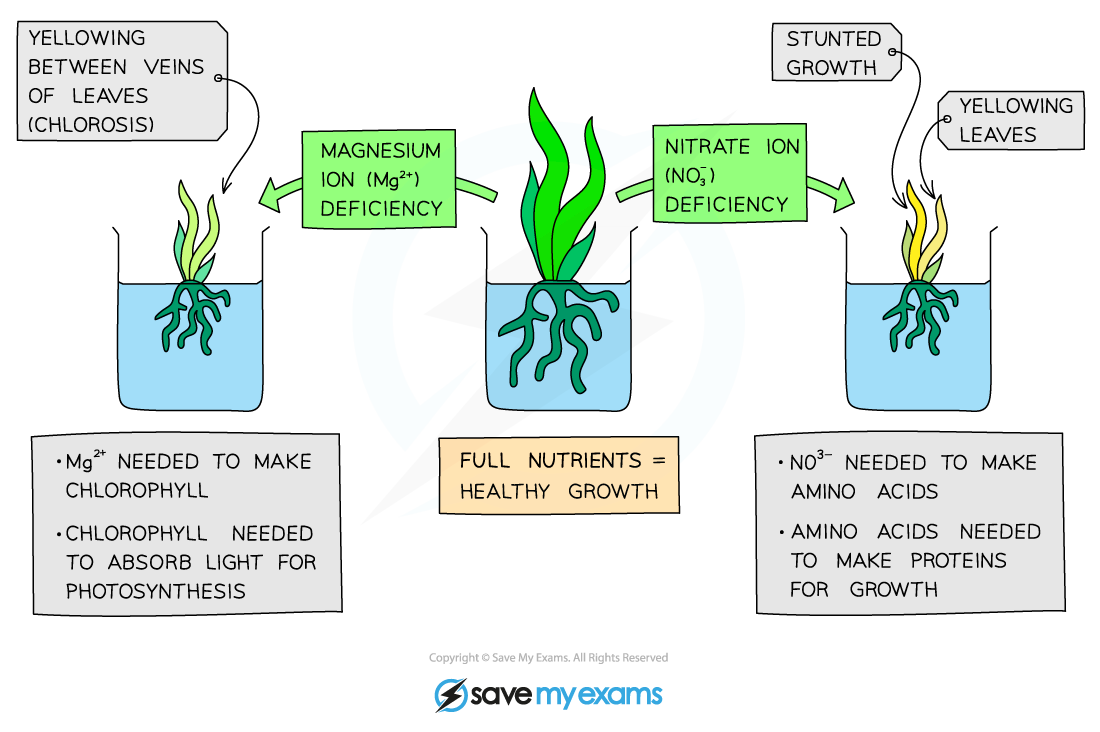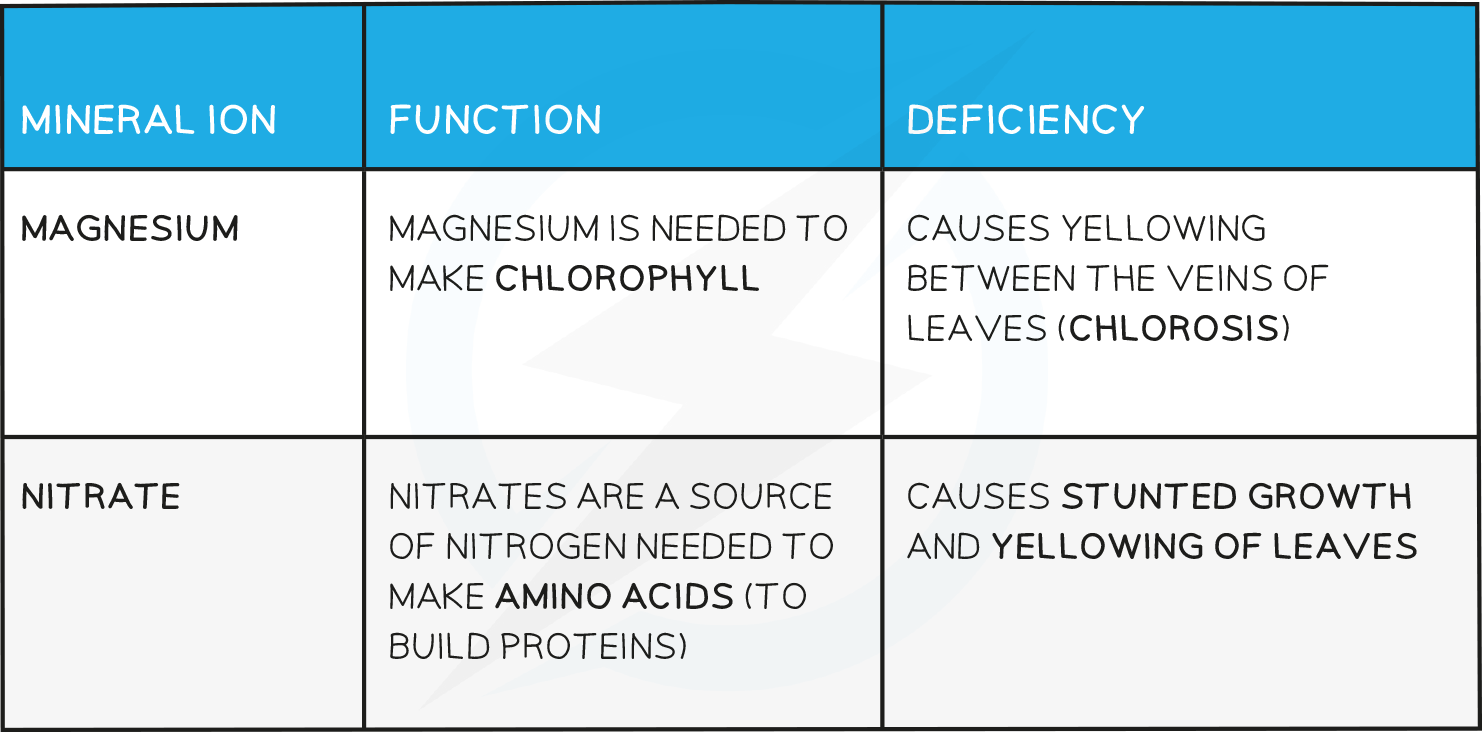- 翰林提供学术活动、国际课程、科研项目一站式留学背景提升服务!
- 400 888 0080
CIE IGCSE Biology: 复习笔记:6.1.4 Minerals in Plants
CIE IGCSE Biology: 复习笔记:6.1.4 Minerals in Plants
Minerals in Plants
- Photosynthesis produces carbohydrates, but plants contain many other types of biological molecule; such as proteins, lipids and nucleic acid (DNA)
- As plants do not eat, they need to make these substances themselves
- Carbohydrates contain the elements carbon, hydrogen and oxygen but proteins, for example, contain nitrogen as well (and certain amino acids contain other elements too)
- Other chemicals in plants contain different elements as well, for example chlorophyll contains magnesium and nitrogen
- This means that without a source of these elements, plants cannot photosynthesise or grow properly
- Plants obtain these elements in the form of mineral ions actively absorbed from the soil by root hair cells
- ‘Mineral’ is a term used to describe any naturally occurring inorganic substance

Mineral deficiencies in plants
Mineral Deficiencies Table

转载自savemyexams

最新发布
© 2025. All Rights Reserved. 沪ICP备2023009024号-1









